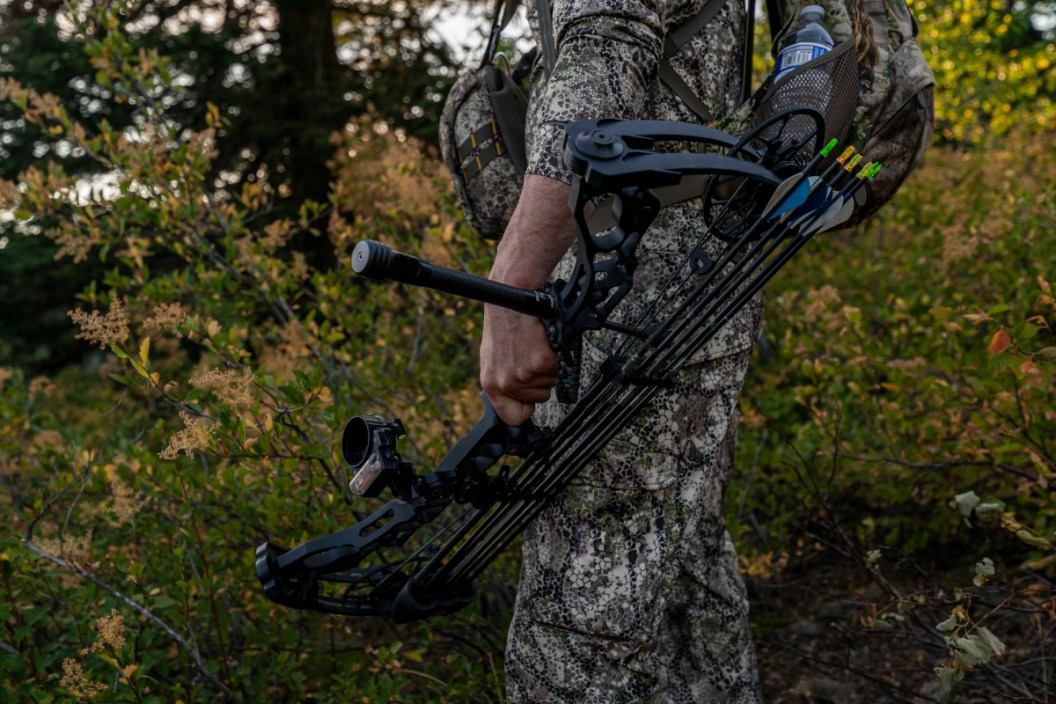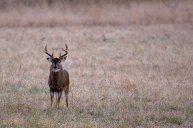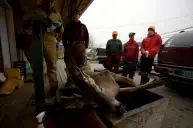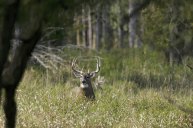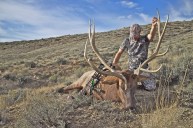Here are 15 bits of bowhunting advice to think about before you get into the game.
Hunting tips come, and bowhunting tips go. But when deer hunting season is on and that big buck is walking up, you want to be as ready as you can when the moment of truth finally arrives.
For hunters new to bowhunting—young or old—the time to find out how prepared they are is in the treestand when that mature buck comes strolling in. If they've put their time in before the bow hunt begins, they should be well-prepared. But until you get there, you can't really be ready.
Since there is more to it than just tending a food plot or hitting a few targets, it stands to reason that some simple bowhunting advice gleaned from friends can go a long way towards how a new bowhunter prepares for the hunt.
Here are some of those bits that I've found simply by asking over the years, and even though many go without saying, it's always good to review before every archery season.
1. Learn your dominate eye right away
There's a school of thought that many hunters live by, and that's to aim having both eyes open. They say this provides the widest field of view.
While some competitive shooters block or close their lesser eye during an event, it's not the same as putting the right pin on a walking deer from a treestand in low-light. The key is to learn which eye is dominant first.
2. Practice the way you will hunt
From the Captain Obvious department: You're going to hunt out of a tree so get up there, wear a harness, and practice shooting from one.
If you will hunt from a ground blind, practice from one. Just remember that the trees are where most hunt deer from, so you need to start getting your mind to work on the angles of shooting downward.
3. Know the distances around your stand
If you've been shooting from above and are getting confident, you need to make a pre-season trip to your stand sites and get a good idea of how far it is to the lanes you've cut. You've found your dominate eye, practiced with it, and now you need to use the right pin when your deer walks up.
Memorize the distances of a few landmarks to help gauge other possible spots game animals could be and then stick within that bow range. Animals that are injured and never recovered usually happen when a hunter tries to go beyond his or her effective range.
4. Don't try to increase your draw weight until you get stronger
An old friend used to say this when talking about draw weight: "Imagine taking an old target-shooting recurve, a blunt field point arrow, and shooting at your own hand from 20 yards. Think it would go through?"
A scary analogy, sure, but the point is with today's technology, a deer's rib cage or shoulder blades don't stand a chance. Choose a compound bow that will allow you to shoot a lighter weight to start, and then gradually increase it as you get stronger. You will know the draw weight is too much if you are shaking and inaccurate every time you come to full draw.
5. Know your animal's anatomy
It may be preaching to the choir, but understanding where to hit a deer or other big game most effectively is all the more paramount when hunting with a bow. Until you're a proficient bowhunter, the best target area is the lungs, as it offers the largest lethal area to hit.
Knowing what will happen on a bad hit is even more important, as you may have to mark the last blood (you know what kind of blood it is, right?) and calmly walk out of the woods the other way.
6. Scent control
If you're deer hunting in any capacity then this goes without saying, but it is all the more necessary when hunting for deer that need to be a lot closer without a firearm.
Activated carbon clothing is a great starting point, but to be truly scent free starts in the shower. Begin using a scent control soap at least a week before the season and keep it up throughout. Don't get lazy: this means getting down to your feet and toes. I've had deer dead downwind of me at 30-40 yards that never had a clue I was there because I showered with the right soap, and deer that winded me on a crosswind from 50 because I didn't. No shortcuts here.
7. Hunt the correct wind
There are veteran hunters out there that feel if you take care of your scent properly, you will never have to think about the wind again. Then there are those of us who understand that being perfectly, precisely scent free every single time out is a pipe dream.
With that in mind, picture this situation. You're setting up over a corn field, looking to the north out of your stand, and there's a steady wind in your face. Odds are that set up will have you seeing deer. But sitting on the same stand on a night that the breeze is at your back jeopardizes the whole hunt. It does not matter it is a prime food source. It does not matter if it is the rut or not, or if there are scrapes and rubs everywhere. Not being cautious about the wind will ruin a hunt in a prime location every single time.
Winds can change, and not having wind at the front of your mind when setting up multiple positions could leave you helpless until another shift in direction.
8. Deer season starts on opening day, but bowhunters get first dibs
Some early seasons for archery start while it's still very green and lush. For many it means using some kind of insect repellent, and that puts a real damper on your scent control.
Still, the best part of it all may be that deer are still in a summer or early fall pattern, and likely not used to hunters being in the field yet. Once gun season begins and the hunting pressure is higher, the deer start to pattern to the change as it is happening.
Hopefully by now you'll start to notice how much the previous bits of information matter. Get in early, and try to learn their pattern before they change it.
9. Patience is a virtue
Now that you've practiced and readied yourself to bowhunt, be ready for long waits on stand... and sometimes just to see anything.
Part of being patient involves keeping your eyes and ears ready and your mind alert. Slow movements are key, so practice turning just your head and not your whole bod. Even better, try to see just using your eyes.
10. Theres always a little luck involved
Sometimes that deer will stop at the worst moment, like when it's still behind a tree. Other times they will do what you least expect and stop right in front of you for an easy shot. All the trail camera research, deer sign tracking, and careful reparation can't predict what a deer will do on any given day. Will you be ready?
Also know that there's nothing wrong with a good luck charm.
11. Don't get discouraged by failure
I have a friend who grunted in a beautiful mature buck—one that had been fighting—right to his stand on the edge of field. When he loosed the arrow the bow string caught just a bit of his grunt tube, which was hanging around his neck, causing a clean miss.
Branches get in the way, squirrels start chattering, and deer bust you. A ruined opportunity is still an opportunity, and you can at least bank on the fact that you picked the right spot! There is not a bowhunter out there who has not had a bow season go wrong at some point. Anyone who says otherwise is lying.
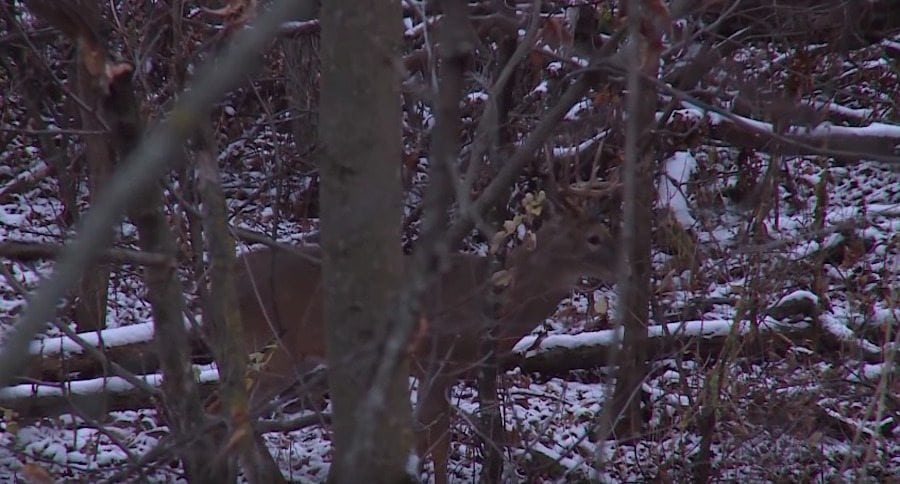
YouTube: Fred Eichler
12. The extreme shot is not for bowhunting
Whether it's the long shot, or worse, a shot where the deer is still behind cover, a broadhead still cannot do what a rifled slug or a rifle cartridge can do. A straight on shot to the brisket is discouraged, but you will find that some veteran bowhunters still feel confident taking that shot.
13. It's okay to let deer go
Again, you picked the right spot. You've been seeing deer and especially that mature whitetail buck that's been on your mind since before the season started.
The only problem is that his little brother or maybe his son is the only one that seems to walk within shooting range. By all means, take what you want within the rule of law in your state or province, but just remember: the big boy you've been seeing didn't get that rack of antlers because some bowhunter plugged him in his second year.
14. Enjoy everything about the experience
Thanks to your friends and your family upbringing, you've loved the outdoors since you can remember, and that's a big part of what it's all about. Breathe in that fresh air, and watch the wildlife moving around you in their natural habitat.
There is nothing better than watching the sunrise from the treetops with a bow in your hand!
15. A safe trip home is still a victory
There are too many good reasons to bowhunt that we can't list them all here. We want you to enjoy it for the rest of your life, so spend some quality time looking for a safety harness that you're comfortable with, tend to your treestand, and respect the fact that you are 20-feet off of the ground.
Don't shoot unless you positively identify your target, and when you do score: that knife in your hands better be sharp enough!
All in all, bowhunting is one of the best reasons to go afield and chase whitetail deer. Young or old, if you're just starting out, get to a reputable archery range. The instructors there have spent a lifetime shooting and familiarizing themselves with all of the latest gear to maximize what they can teach their clients: there's no reason that shouldn't be you!
What other advice would you give a bowhunter that is just starting out?
Products featured on Wide Open Spaces are independently selected by our editors. However, when you buy something through our links, we may earn a commission.
Looking for a little more? Follow my webpage, or on Facebook and Twitter.
NEXT: BIG GAME SHOT PLACEMENT REVIEW
WATCH
